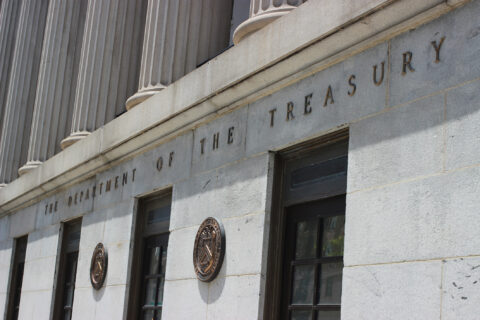Since the American Rescue Plan Act (ARPA) was signed into law in March 2021, the Biden Administration has urged recipients to spend grant funds in ways that address longstanding racial disparities, inequities and disproportionate harm caused or exacerbated by the pandemic. The U.S. Department of the Treasury’s (Treasury’s) Final Rule for the Coronavirus State and Local Fiscal Recovery Funds (SLFRF) cites research documenting how communities of color and other marginalized populations were disproportionately impacted by the pandemic in the form of higher case fatality rates, levels of unemployment and job loss.
To better understand the extent to which SLFRF provides cities with the opportunity to bridge these equity gaps, NLC analyzed whether communities with higher levels of unemployment, COVID-19 fatality and poverty received greater allocations per resident. For the full analysis of funding distributions to metropolitan cities, review NLC’s Toward an Equitable Recovery Report.
Unemployment
In 2020, the unemployment rate increased by nearly 10 percent between the first and second quarter, resulting in an average of 20.6 million unemployed Americans.i Induced by the pandemic, these rising unemployment rates disproportionately impacted communities of color, where the national average was 8.1 percent. The unemployment rate for Black or African American workers was 4.2 percentage points higher than the unemployment rate for white workers.ii Communities of color represent a greater proportion of workers in industries that were more likely to close during the pandemic, such as restaurants and other service-based industries, making the pandemic’s impact more severe for communities already under-resourced.iii
We found that SLFRF allocations are successfully being directed to cities harder hit by low unemployment rates in 2020. Metropolitan cities that experienced higher annual unemployment rates in 2020 received, on average, more SLFRF funds per resident than those with lower 2020 unemployment rates.iv
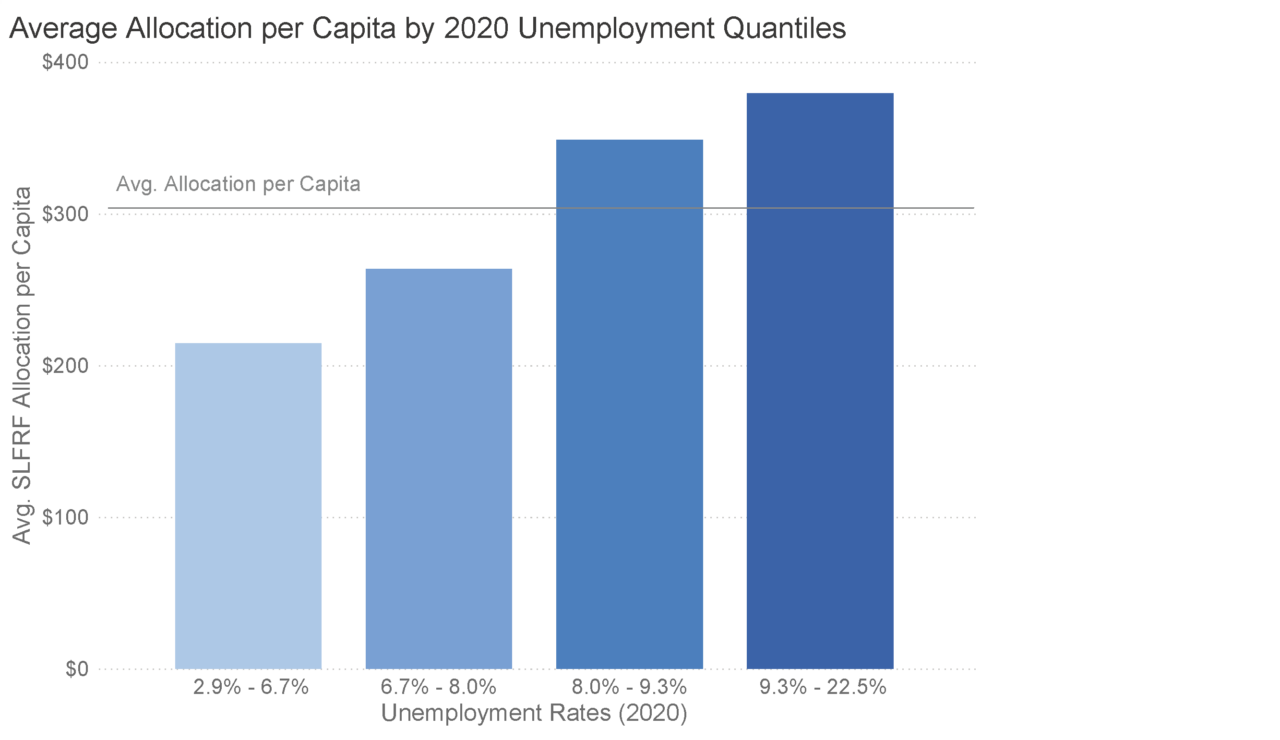
COVID Case Fatalities
Since January 21, 2020, more than 40.2 million Americans have been diagnosed with COVID-19 and, as of January 2022, over 860,000 Americans died from COVID-19.v COVID-19 case and fatality rates vary across race and ethnicity, with disproportionate impacts on communities of color.vi Compared with white people, American Indian or Alaska Native people are 1.7 times more likely to contract COVID-19 and 2.4 times more likely to die from COVID-19.vii
We found that cities that experienced high rates of COVID-19 fatalities in 2020 received more funds per capita. Specifically, our analysis found that cities with the highest COVID-19 case fatality rates received almost twice as many funds per capita as the cities with the lowest case fatality rates.viii
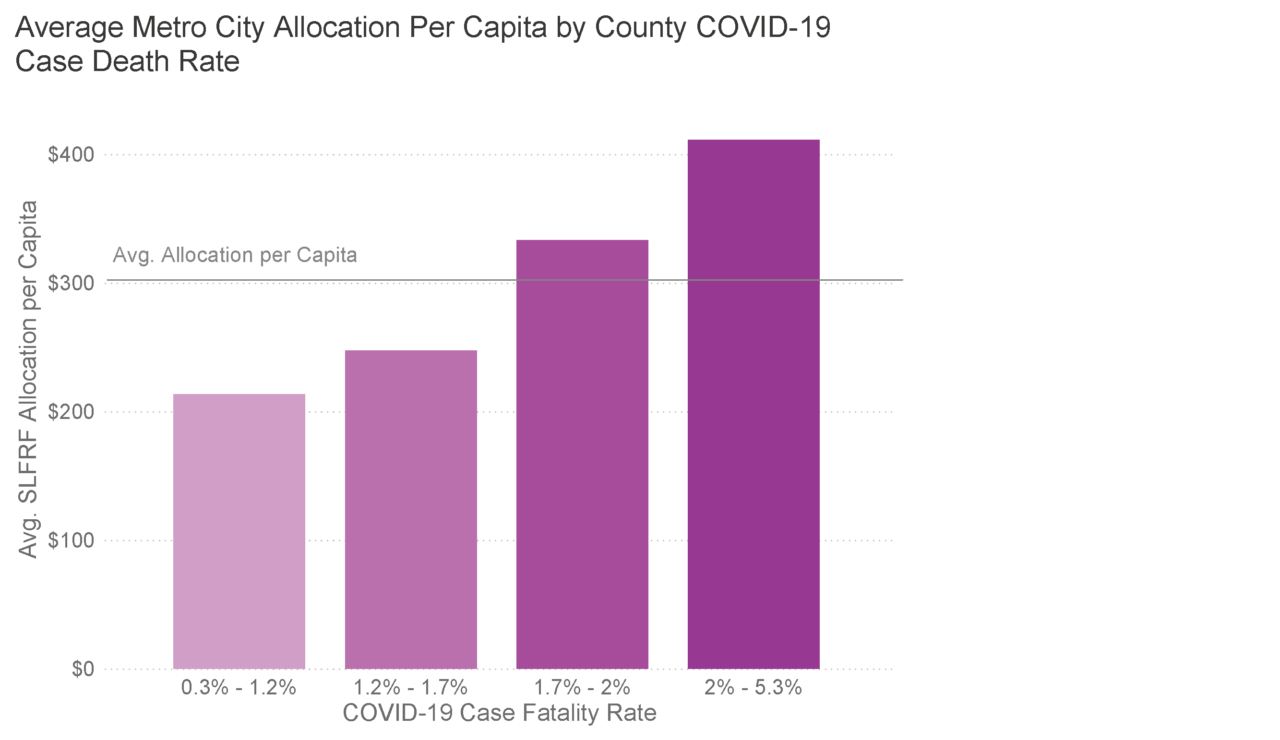
Poverty and Household Income
The COVID-19 pandemic significantly impacted household income and increased rates of poverty across the U.S. for many marginalized populations. In 2020, the median income for Black or African American households was $21,651 less than the national median and $12,200 less than the national median for Hispanic households.ix While the 2020 Economic Impact Payments (or stimulus checks) helped many low-income households replace some lost wages, many U.S. households continue to struggle to make ends meet. Through SLFRF allocations, cities can address systemic poverty in their communities by implementing programs and policies that assist individuals and families most in need.
We found that cities with more economically vulnerable residents will receive more funds per capita. Our analysis revealed that metropolitan cities with higher levels of poverty and lower median household incomes received, on average, more SLFRF funds per capita, compared with metropolitan cities with lower levels of poverty and higher household incomes.
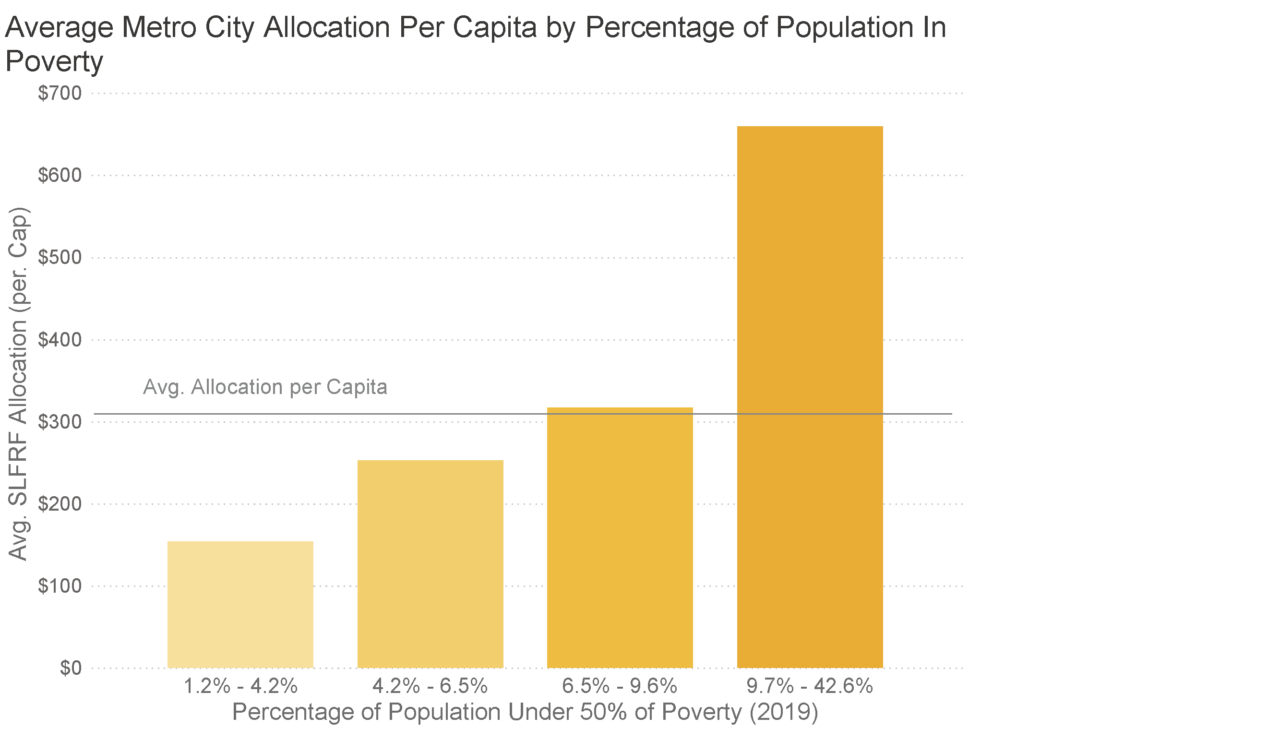
SLFRF as a Tool for Equity
The Toward an Equitable Recovery: An Analysis of ARPA Funds to Metropolitan Cities report demonstrates that the SLFRF program allocates a greater share of funding per resident to metropolitan cities most in need. Providing greater equity – not equality – in funding support will not only help struggling cities recover but will support the rebuilding of entire regions and beyond. NLC supported Congressional efforts to target more funding to communities with higher needs and those who experienced greater harm caused by the pandemic. Targeting these federal funds to communities in greatest need is a necessary first step for equitable recovery. All cities nationwide, no matter their makeup or circumstance, have a tremendous opportunity to use their SLFRF allocations to quell systemic inequalities both onset by the pandemic and those that were present before.
Learn More
Looking for more tools and resources related to ARPA? Check out the resources linked below!
- Final Rule on ARPA SLFRF Grants: 10 Things for City Leaders to Know
- How America’s Smallest Municipalities Are Spending Their SLFRF Funds
- ARPA Fact Sheet: ARPA Sustainability & Climate Resilience
- ARPA and Housing Stability
- Leveraging ARPA Fiscal Recovery Funds to Support Small Businesses
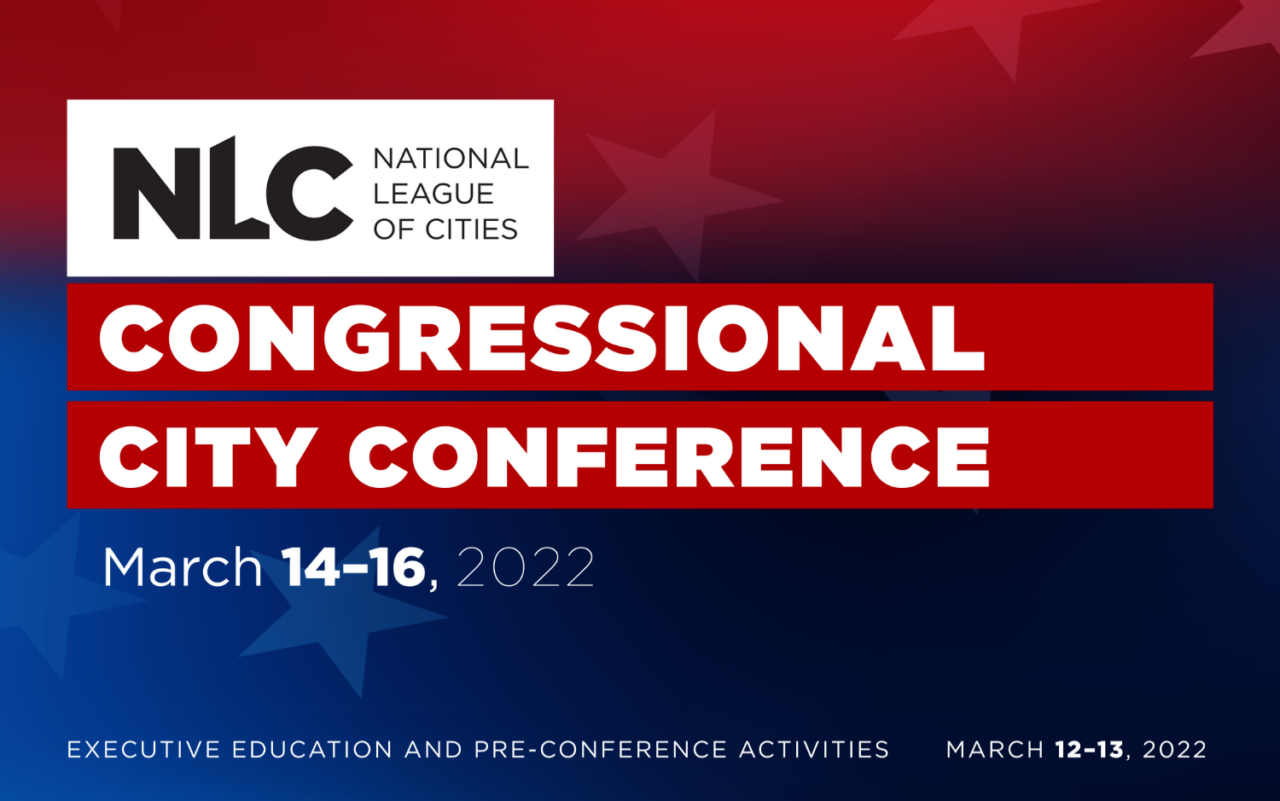
Register for the Congressional City Conference, March 14-16 in Washington, DC to engage directly with federal agency leads on programs available to local governments under ARPA and the Bipartisan Infrastructure law.
Endnotes
- Smith, S., Edwards, R., Duong, H.C. (2021, June). Unemployment rises in 2020, as the country battles the COVID-19 pandemic. United States Bureau of Labor Statistics. https://www.bls.gov/opub/mlr/2021/article/unemployment-rises-in-2020-as-the-country-battles-the-covid-19-pandemic.htm
- United States Bureau of Labor Statistics. Current Population Survey- unemployment rates by race and Hispanic ethnicity. https://www.bls.gov/cps/demographics.htm
- Maxwell, C., Solomon, D. (2020, April 14). The Economic Fallout of the Coronavirus for People of Color. The Center for American Progress. https://www.americanprogress.org/issues/race/news/2020/04/14/483125/economic-fallout-coronavirus-people-color/
- McFarland, C., Brown, M., Bauer, J., Grabowski, E. (2021, December). Toward an equitable recovery: An analysis of ARPA funds to metropolitan cities. National League of Cities. https://www.nlc.org/wp-content/uploads/2021/12/NLC-Arpa-Analysis-Report.pdf
- Centers for Disease Control and Prevention. (2022, January 23). United States COVID-19 cases, deaths, and laboratory Testing (NAATs) by state, territory, and jurisdiction. https://covid.cdc.gov/covid-data-tracker/#cases_deathsinlast7days
- Centers for Disease Control and Prevention. (2021, September 9). Risk for COVID-19 infection, hospitalization, and death by race/ethnicity. https://www.cdc.gov/coronavirus/2019-ncov/covid-data/investigationsdiscovery/hospitalization-death-byrace-ethnicity.html#footnote01
- Centers for Disease Control and Prevention. (2021, September 9). Risk for COVID-19 infection, hospitalization, and death by race/ethnicity.
- McFarland, C. (2021, December). Toward an equitable recovery…
- United States Census. Table A-2 Households by Total Money Income, Race, and Hispanic Origin of Householder from 1967 to 2020. https://www.census.gov/data/tables/2021/demo/income-poverty/p60-273.html









